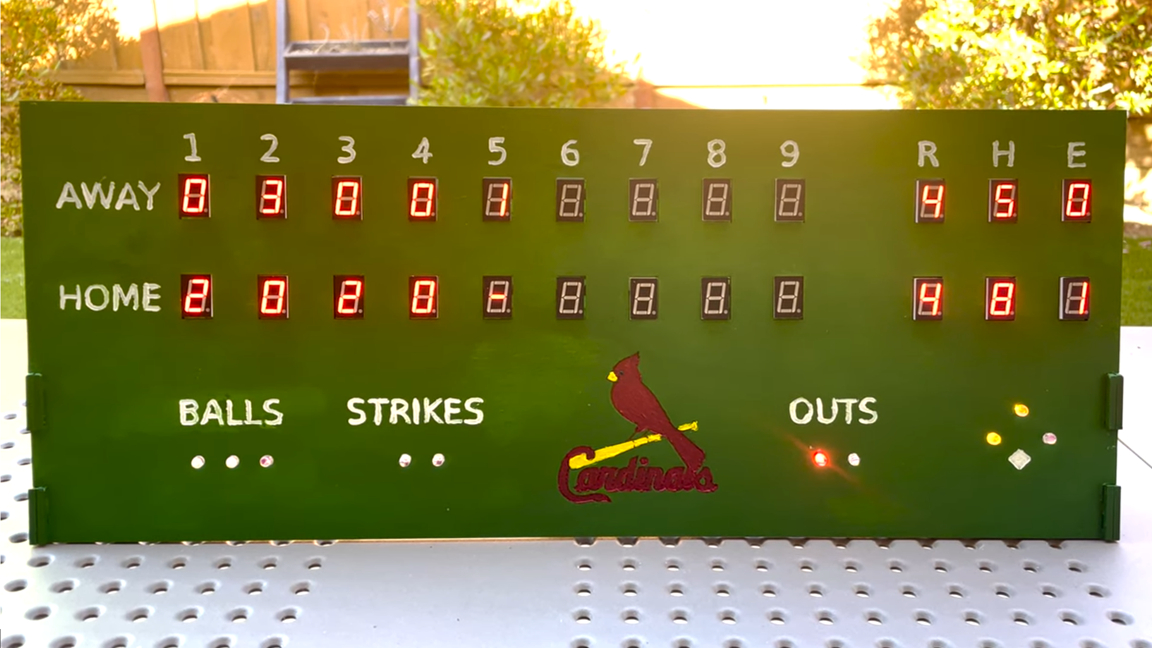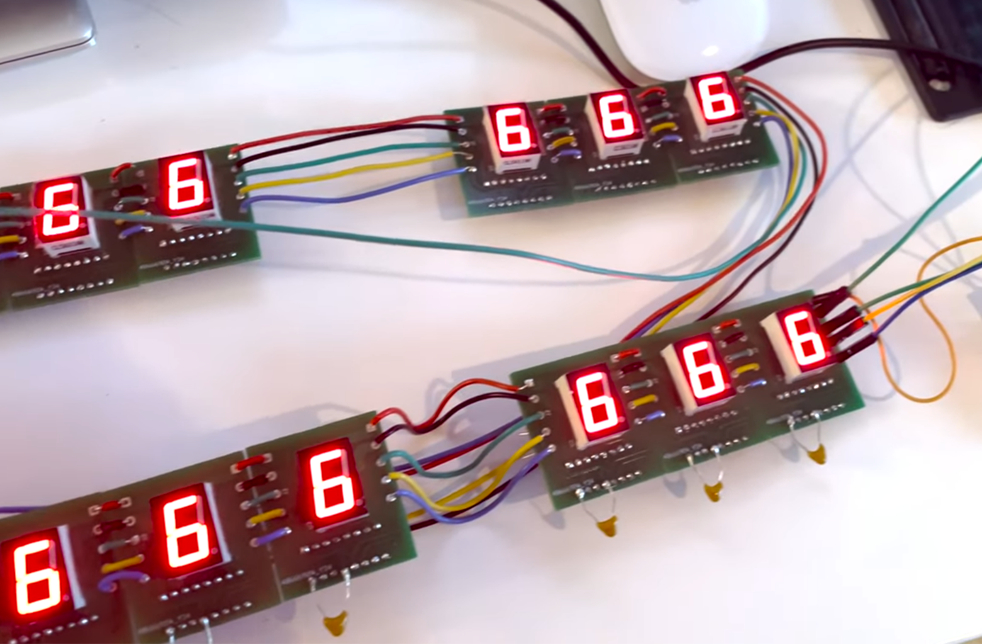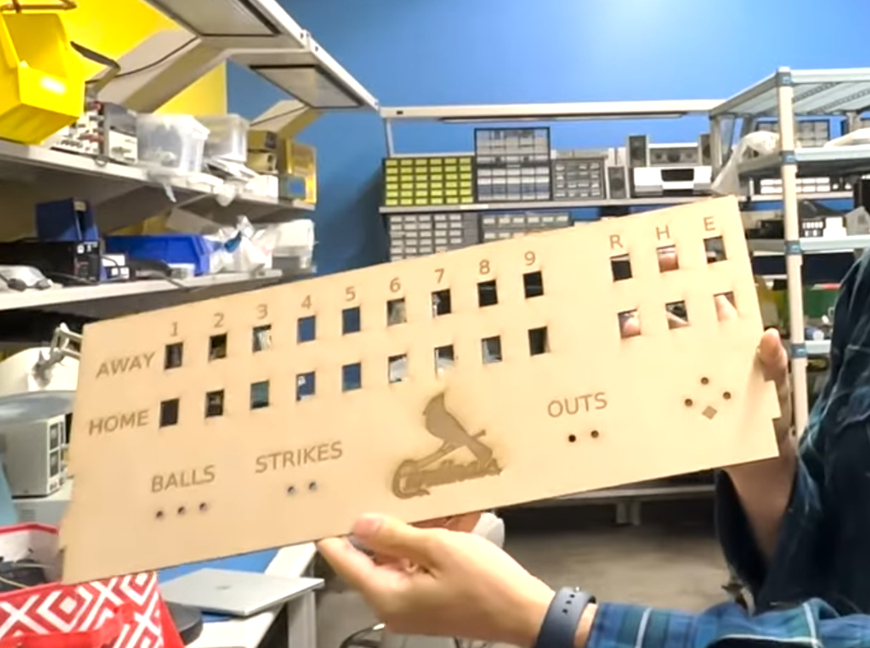
With so many APIs available this day and age, the possibilities are seemingly endless when it comes to what you can tap into with a Raspberry Pi. From using AI to power your creations with ChatGPT to using Amazon’s API to create a custom Alexa device, there’s just so much you can use. Today, we’ve got an awesome project to share created by Clayton from Design Build Make who’s using an API to pull baseball scores for a custom desktop scoreboard that tracks his favorite team—the Cardinals.
According to Clayton, the idea for the project came to him after he got tired of regularly checking his phone for scores. To resolve that problem, he decided to build a scoreboard that automatically updates in real-time with score data. It looks like an old-school scoreboard you’d find on a baseball field but this one is much smaller and fits on your desk.
The board is shaped like a wide rectangle. It’s made of wood and laser-cut with holes for the score displays which is presented using 7-segment displays. It has a few LEDs at the bottom to represent things like how many outs, strikes and balls have been tallied as well as how many players are on which base. It’s finished with a custom green paint job and a snazzy logo for the Cardinals.
Clayton explains that there are 24 7-segment displays used in the project. Shift registers were necessary to control each of them. They are daisy-chained together for convenience and also feature a custom PCB which helps organize the design. The entire project is driven by a Raspberry Pi 3B+ but you could likely get away with using an older model of Raspberry Pi, or even something smaller like a Raspberry Pi Zero 2 W model or the Raspberry Pi Pico W.



The API used in this project is the exact same API Major League Baseball (MLB) uses to log their play by play scores. You can find details about this API and how to access it over at GitHub. Because this requires regular updates, the Raspberry Pi will need internet access in order to update the scoreboard.
If you want to get a closer look at how this Raspberry Pi project works, check out the video shared to YouTube by Clayton and be sure to follow him for more cool projects in the future.







